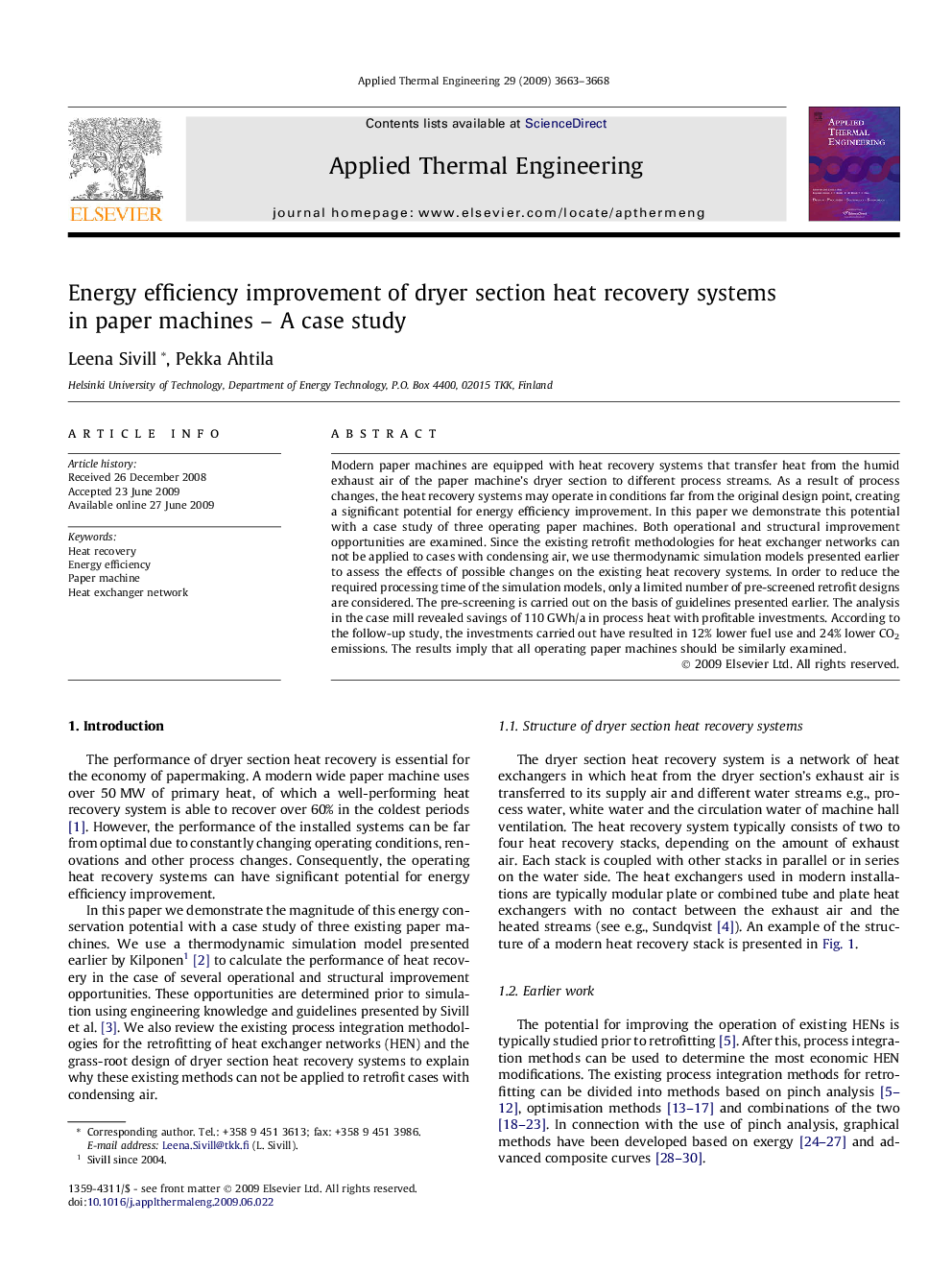| Article ID | Journal | Published Year | Pages | File Type |
|---|---|---|---|---|
| 648298 | Applied Thermal Engineering | 2009 | 6 Pages |
Abstract
Modern paper machines are equipped with heat recovery systems that transfer heat from the humid exhaust air of the paper machine's dryer section to different process streams. As a result of process changes, the heat recovery systems may operate in conditions far from the original design point, creating a significant potential for energy efficiency improvement. In this paper we demonstrate this potential with a case study of three operating paper machines. Both operational and structural improvement opportunities are examined. Since the existing retrofit methodologies for heat exchanger networks can not be applied to cases with condensing air, we use thermodynamic simulation models presented earlier to assess the effects of possible changes on the existing heat recovery systems. In order to reduce the required processing time of the simulation models, only a limited number of pre-screened retrofit designs are considered. The pre-screening is carried out on the basis of guidelines presented earlier. The analysis in the case mill revealed savings of 110Â GWh/a in process heat with profitable investments. According to the follow-up study, the investments carried out have resulted in 12% lower fuel use and 24% lower CO2 emissions. The results imply that all operating paper machines should be similarly examined.
Related Topics
Physical Sciences and Engineering
Chemical Engineering
Fluid Flow and Transfer Processes
Authors
Leena Sivill, Pekka Ahtila,
